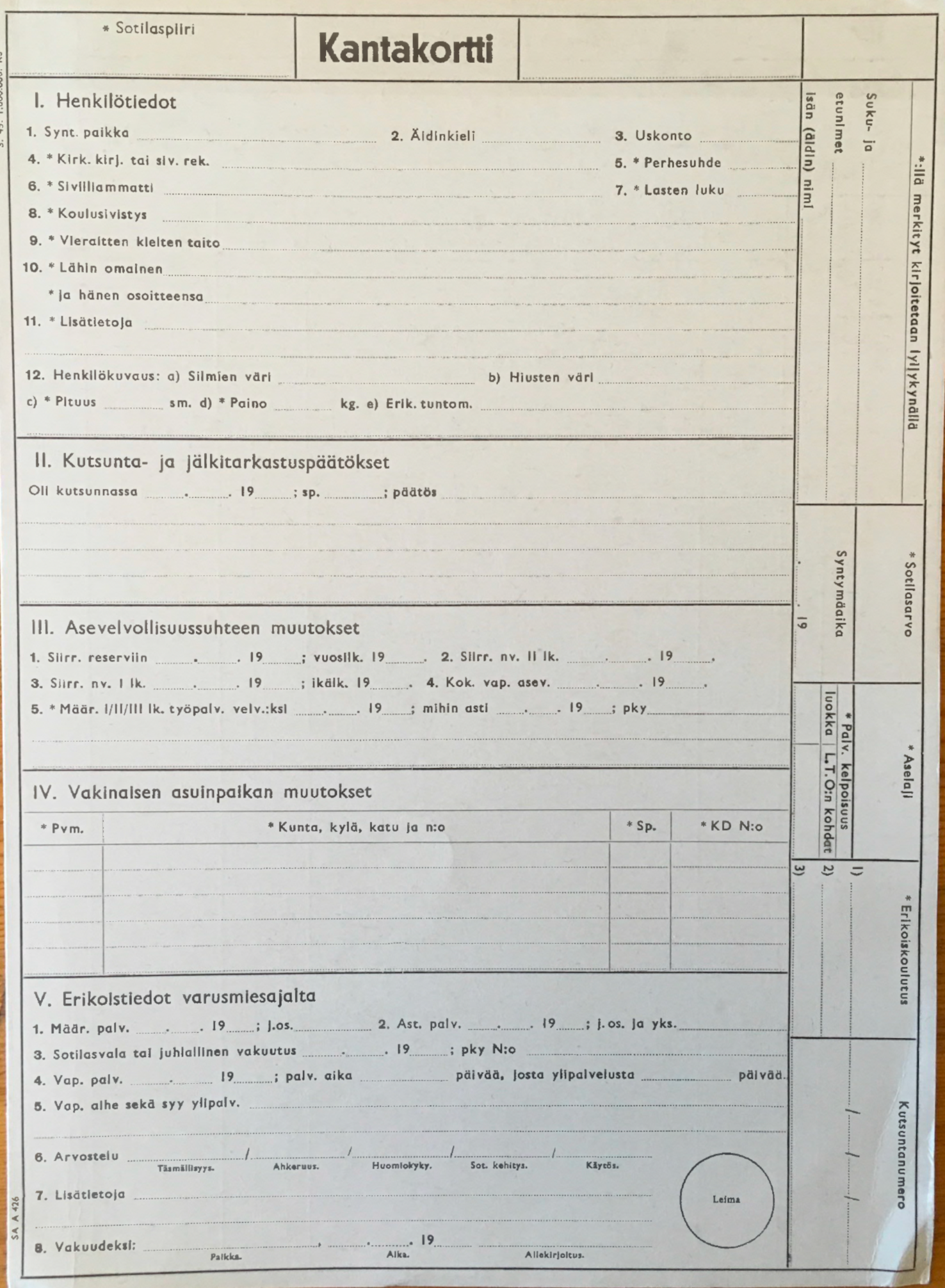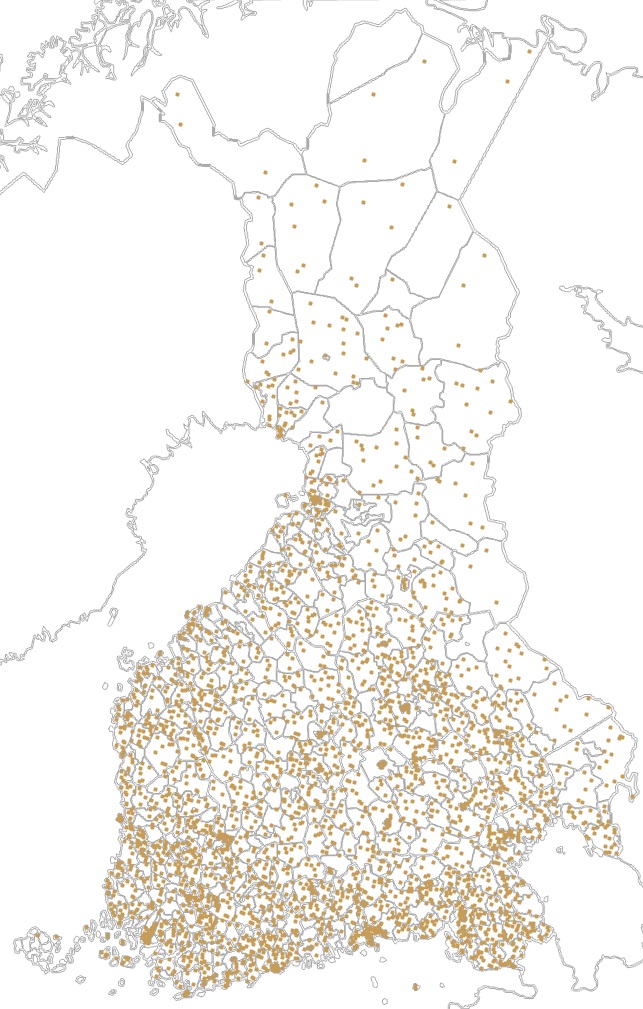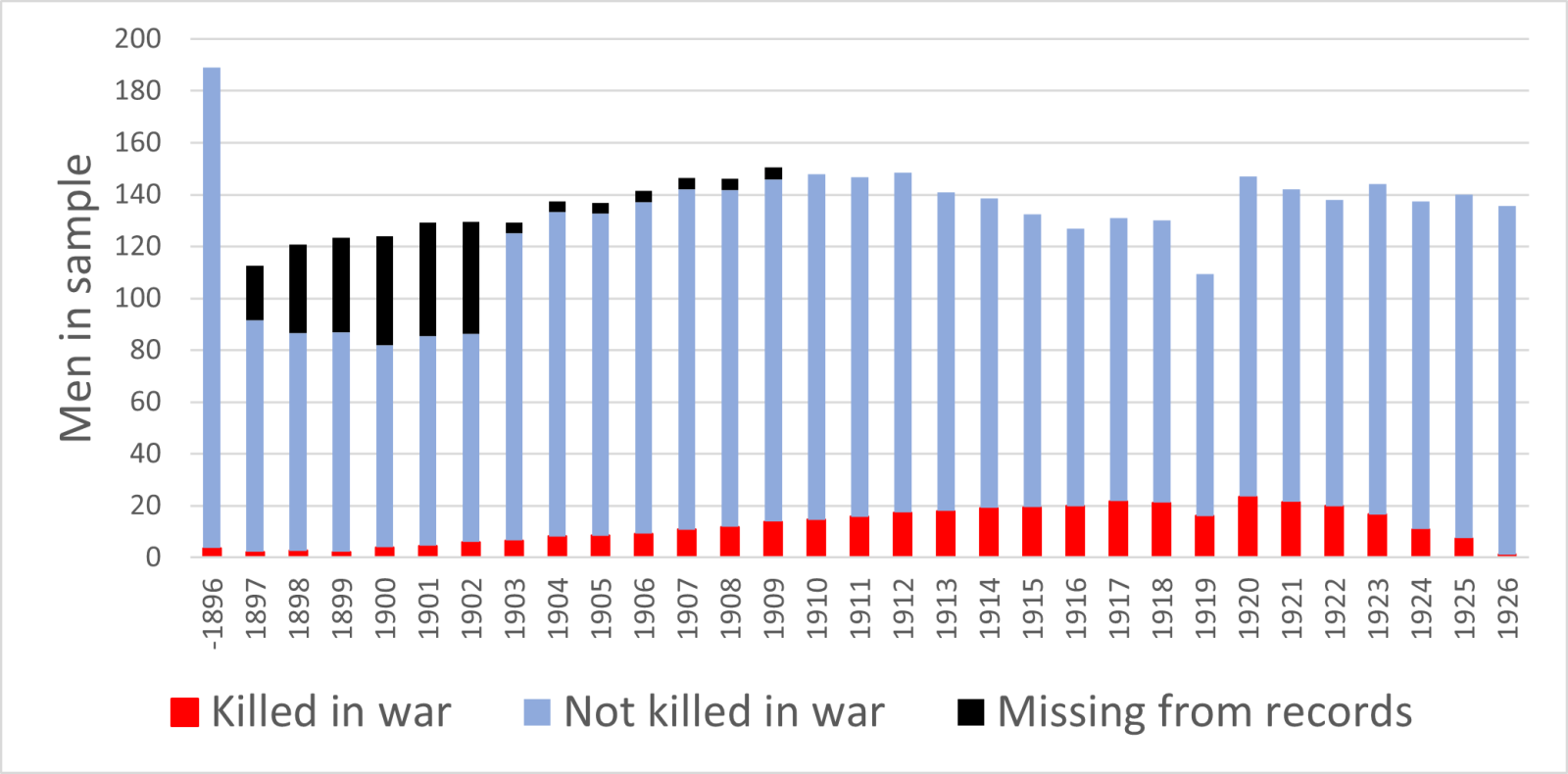
The gathering of such an extensive database has been possible thanks to the military service record collection of the Finnish army stored in the National Archives of Finland. The collection consists of personnel documents that the Finnish army has produced on its servicemen since the beginning of Finnish independence in 1917 and is extraordinarily representative. Due to strictly implemented universal conscription and the total wartime mobilization of Finnish society, practically all Finnish men of the above-mentioned cohorts were examined by the army and as many as 80% of them served during the war. The records have also survived very well: the collection holds files for 99% of Finnish men of the birth cohort 1903–26 who were alive at draft age, and around 70% of the birth cohorts 1897–1902. The missing men are mostly those who were exempt from military service or had died before World War II, thus records exist on practically every Finnish man who fought in the war.

The military service record collection consists of personnel files. A person’s file consists on average of 15 pages of service and medical records compiled during the call-up procedures, military training, wartime service, and postwar reservist period. The main document of the collection is a military service card (kantakortti) written for a man after a call-up and updated throughout his military career. The document contains the man’s personal information, military service history, evaluations, and details of war experience like being wounded and participation in battles.
We started to build the FA2W database during the research project “Large Databases in Studying the History of War Experiences” (STASKO), funded by the Finnish Cultural Foundation in 2017–20. After the STASKO project, work on the database continued on a small-scale for two years, the greatest changes being the redefining of the sample to be a more accurately stratified random sample and some minor changes to the database. Now with the UnWar funding, the inputting of the data will be completed at the beginning of 2025.

